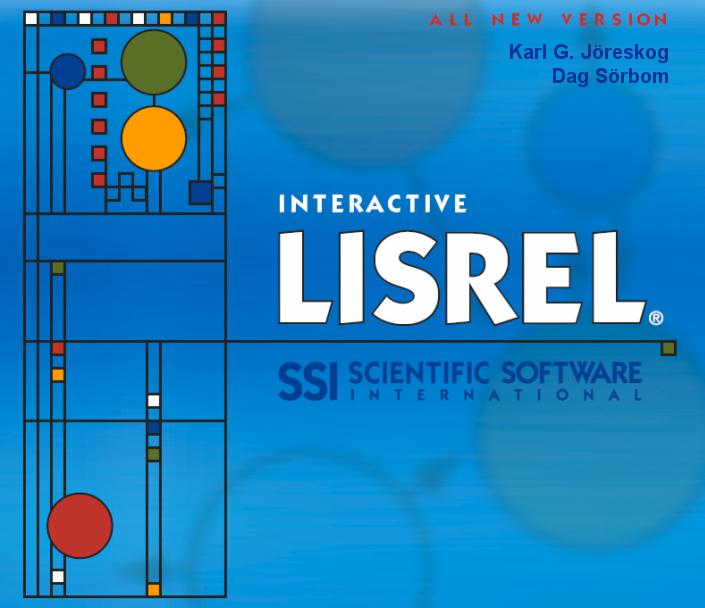

During the last thirty years, the LISREL model, methods and software have become synonymous with structural equation modeling (SEM). SEM allows researchers in the social sciences, management sciences, behavioral sciences, biological sciences, educational sciences and other fields to empirically assess their theories. These theories are usually formulated as theoretical models for observed and latent (unobservable) variables. If data are collected for the observed variables of the theoretical model, the LISREL program can be used to fit the model to the data. Today, however, LISREL for Windows is no longer limited to SEM.
- LISREL for structural equation modeling.
- The 32-bit application LISREL is intended for:
- Standard structural equation modeling
- Multilevel structural equation modeling
- These methods are available for the following data types:
- Complete and incomplete complex survey data on continuous variables
- Complete and incomplete simple random sample data on ordinal and continuous variables
- PRELIS for data manipulations and basic statistical analyses.
- PRELIS is a 32-bit application which can be used for:
- Data manipulation
- Data transformation
- Data generation
- Computing moment matrices
- Computing asymptotic covariance matrices of sample moments
- Imputation by matching
- Multiple imputation
- Multiple linear regression
- Logistic regression
- Univariate and multivariate censored regression
- ML and MINRES exploratory factor analysis
- MULTILEV for hierarchical linear and non-linear modeling.
- MULTILEV fits multilevel linear and nonlinear models to multilevel data from simple random and complex survey designs. It allows for models with continuous and categorical response variables.
- SURVEYGLIM for generalized linear modeling.
- SURVEYGLIM fits Generalized LInear Models (GLIMs) to data from simple random and complex survey designs. Models for the following sampling distributions are available.
- Multinomial
- Bernoulli
- Binomial
- Negative Binomial
- Poisson
- Normal
- Gamma
- Inverse Gaussian
- CATFIRM for formative inference-based recursive modeling for categorical response variables.
- CATFIRM implements formal inference-based recursive modeling for categorical outcome variables.
- CONFIRM for formative inference-based recursive modeling for continuous response variables.
- CONFIRM implements formal inference-based recursive modeling for continuous outcome variables.
- MAPGLIM for generalized linear modeling for multilevel data.
- MAPGLIM implements the Maximum A Priori (MAP) method to fit generalized linear models to multilevel data.
LISREL for Windows requires Windows 95, Windows 98, Windows-ME, Windows 2000 or Windows XP. It is compatible with 32-bit and 64-bit editions of Windows XP, Windows Vista, and Windows 7.
Microsoft has awarded SSI’s LISREL software its prestigious Certified for Windows Vistalogo. Only applications that pass rigorous testing procedures for compatibility, functionality, and reliability on Windows Vista-based personal computers are granted this logo.
Lisrel 8.7 is also available for Unix.
Available Unix platforms:
- Sun-Solaris
- Linux
- TRU64
- IBM-AIX
- Alpha-OpenVMS
All machines in a network license must be of the same hardware type, i.e., all RS/6000s, all SUN SPARCstations, etc. Because different hardware platforms are not binary compatible, several network licenses may be required to make LISREL/PRELIS available on all stations of a heterogeneous UNIX network. Program licensing is “network-aware”. License fees are based on the number of station nodes ordered per year. There is no limit on the number of users. The program is not designed to take advantage of multi-processor systems. The program has a text-driven interface, using text data and syntax files for input and output, rather than a graphical interface. No graphical features are included.
